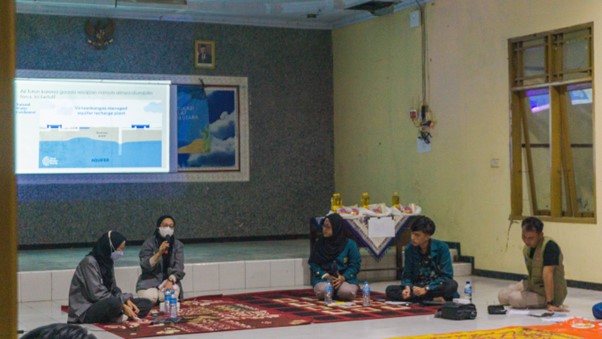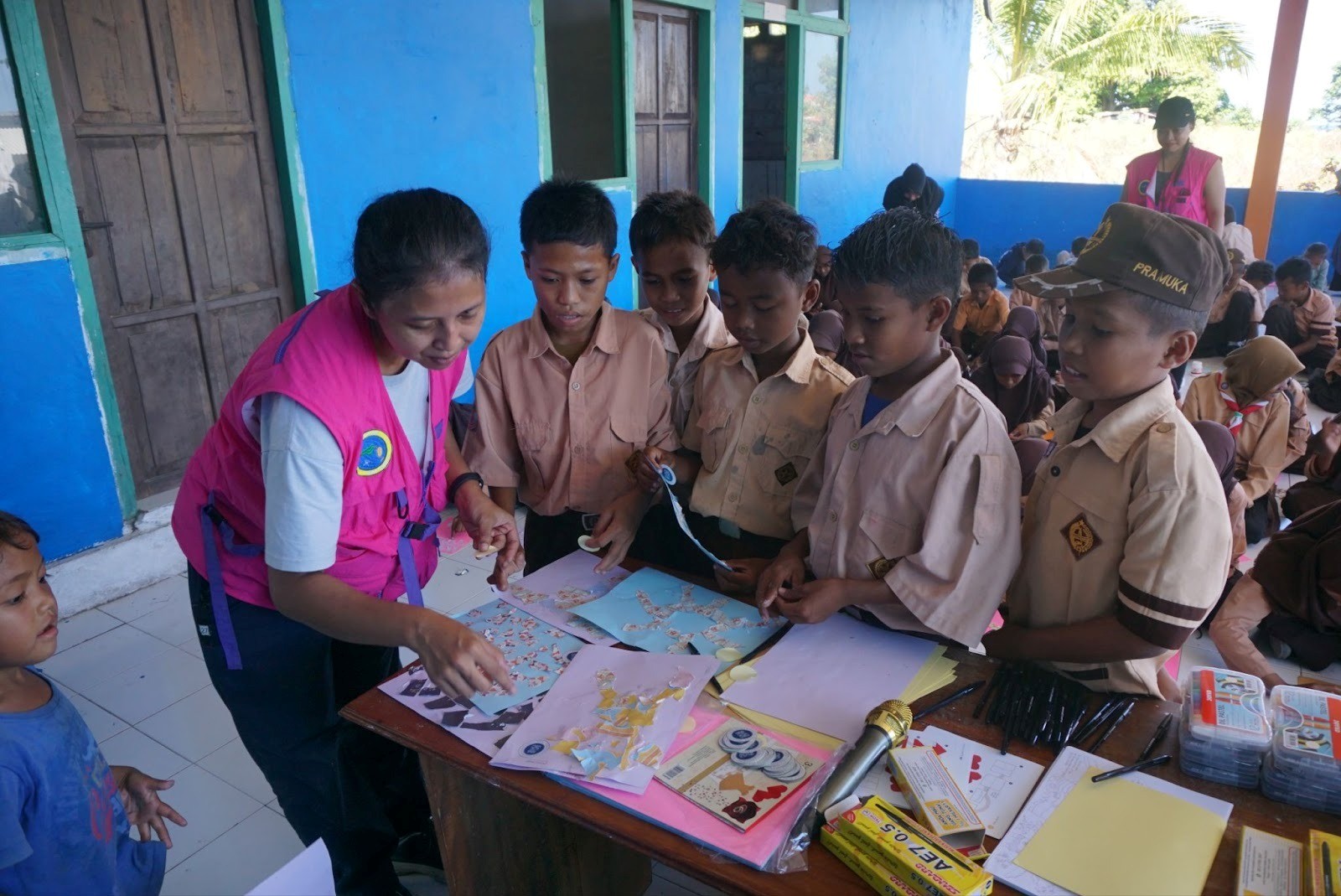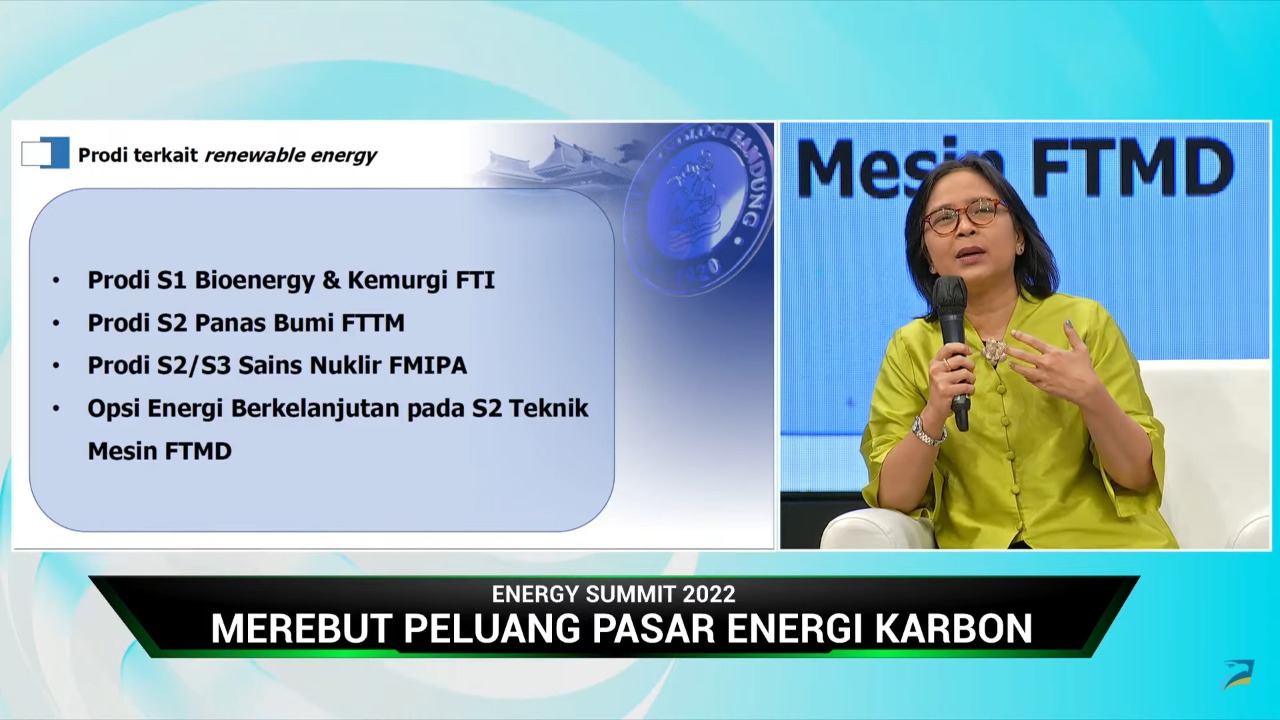ITB Encourages Degayu Community to Be Adaptive During Tidal Floods Disasters
By Adi Permana
Editor Adi Permana

PEKALONGAN, itb.ac.id— The ongoing climate change has struck a severe blow to archipelagic countries like Indonesia. "Our Earth is no longer the same. Many meteorological and oceanographic phenomena will be exceedingly extreme in the next ten to twenty years. The rise of sea level and land subsidence that ensue alongside one another causes small islands to sink and tidal floods on coastal areas to be more severe," Dr.rer.nat Rima Rachmayani, S.Si., M.Si., an Oceanography professor in ITB, stated at a community service held in Degayu Village, North Pekalongan.
"The impacts of these floods can become harsher if the land subsidence of the area worsens,” Sella Lestari Nurmaulia, S.T., M.T., a lecturer from ITB Geodesy and Geomatics Engineering, added. "Based on research, the land subsidence in Pekalongan reaches 7 cm per year."
The talk show titled "Dealing with Tidal Floods in North Pekalongan" was initiated by the ITB Coastal Care Team in hopes of educating and socializing adapting practices to local communities during floods. Twelve students were involved in this program under the supervision of the ITB Student Affairs Directorate. The chosen coastal village, Degayu, is subjected to tidal floods caused by the ebb and flow of incoming tides.
Aside from the presentation shared by the two lecturers, the Head of the Disaster Alertness Section of the Pekalongan City Agency for Disaster Countermeasure, Dimas Arga Yudha, was invited to share his thoughts. "Hopefully, the people of Degayu can be more vigilant about tidal floods for better anticipation of the disasters with minimum losses," the Head of ITB Coastal Care Team, Riyadi Zakia (OS 20), commented.
Sella stated that most people are vulnerable to disasters not only because of their threats, but also their low survivability. "The survival capacity can be raised by studying more about these disasters. It is necessary to form a disaster management team in villages to map out the area and identify the disasters with the highest chance of occurrence in Degayu. Then, the team can predict ways to reduce its impacts, such as plotting possible evacuation points."
The supervising lecturer of the community service explained that public awareness must be cultivated first before actions are taken. "People must be aware of their surroundings. They should realize by now that they are living in a place prone to natural disasters. Moreover, the infrastructures required for their safety are not easy and instantaneous to construct, so people must know the importance of adapting to the environment.”
Picturing worst-case scenarios helps formulate the best plans during a disaster. Several structural mitigations can be built around the village to protect it, such as the establishment of sea embankments, arrangement of settlements near the Gambus Canal, the elevation of roads, construction of pump houses, and planting of mangroves. One of the leaders of the Degayu community, Burhan, appreciated the help offered and encouraged the community to contribute and adapt in the face of disasters.
Reporter: Maharani Rachmawati Purnomo (Oceanography, 2020)
Translator: Ruth Nathania (Environmental Engineering, 2019)

.jpg)
.jpg)


.jpg)


